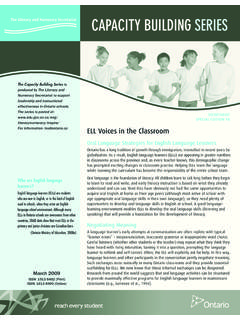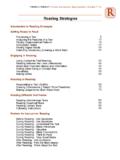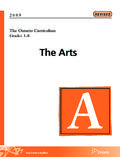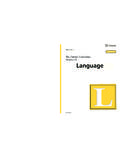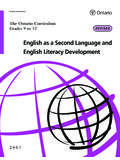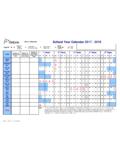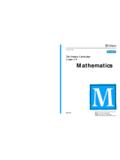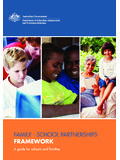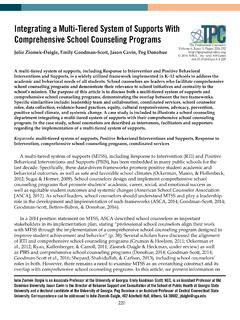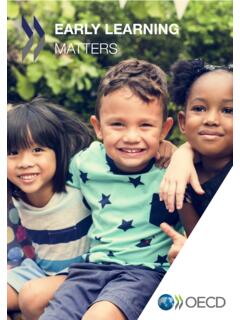Transcription of Capacity Building Series
1 Capacity Building Series K 1 2 3 4 5 6 7 8 9 10 11 12. SECRETARIAT SPECIAL EDITION # 32. inquiry - based learning ON TRANSFORMING WONDER INTO KNOWLEDGE. It was only by taking the time to thoroughly investigate and interrogate a topic through The essence of inquiry . dedicated inquiry that a falling apple became inspiration for the study of gravity and inquiry .. requires more than simply was eventually formalized into the scientific notation g = m/s 2, or that through the imaginative process of pretending to ride a light beam that E=MC 2 was borne. answering questions or getting a right Our goal as educators is to help students make this leap from intuitive understand- answer. It espouses investigation, ings and natural curiosity to knowledge creation to a space where ideas can be exploration, search, quest, research, transformed into formalized understanding and further questioning.
2 Pursuit, and study. It is enhanced by involvement with a community The Great Challenge of Education Today of learners, each learning from the As educators we are charged with the great challenge and responsibility of engaging other in social interaction. students in learning so that they develop the skills and knowledge they need to (Kuklthau, Maniotes & function in today's world. Questions and concerns abound. How do we instill the Caspari, 2007, p. 2) skills and the values necessary to experience success in the present and in the future? How can we provide opportunities for students to move beyond being passive recipients of knowledge to become knowledge builders, capable of creative and innovative solutions to problems? How can we play a role in human progress by equipping our students with the requisite knowledge, skills and dispositions to solve the daunting problems of our age?
3 There is no one recipe for success. There are, however, some pedagogical approaches to transforming educational practice that seem better suited for the job than others. What follows is a review of the key characteristics of inquiry - based learning that offer promise in supporting students to become thoughtful, motivated, collaborative and innovative learners capable of engaging in their own inquiries and thriving in a world of constant change. The Capacity Building Series is produced by the Student May 2013 Achievement Division to support leadership and instructional ISSN: 1913 8482 (Print) effectiveness in Ontario schools. The Series is posted at: ISSN: 1913 8490 (Online) For information: support every child reach every student inquiry - based learning is education at its best .. inquiry - based learning is an approach to teaching and learning that places students'.
4 Questions, ideas and observations at the centre of the learning experience. Educators Why student led inquiry ? play an active role throughout the process by establishing a culture where ideas are Why now? respectfully challenged, tested, redefined and viewed as improvable, moving children from a position of wondering to a position of enacted understanding and further If we are only teaching what we know, questioning (Scardamalia, 2002). Underlying this approach is the idea that both our children can only do as bad as we are educators and students share responsibility for learning . doing, and this is the challenge we are For students, the process often involves open-ended investigations into a question facing we have to go beyond it. or a problem, requiring them to engage in evidence- based reasoning and creative (Pauli, 2009, TEDx) problem-solving, as well as problem finding.
5 For educators, the process is about being responsive to the students' learning needs, and most importantly, knowing when and how to introduce students to ideas that will move them forward in their inquiry . Together, educators and students co-author the learning experience, accepting mutual responsibility for planning, assessment for learning and the advancement of individual as well as class-wide understanding of personally meaningful content and ideas (Fielding, 2012). Although inquiry - based learning is a pedagogical mindset that can pervade school and classroom life (Natural Curiosity, p. 7, 2011), and can be seen across a variety of contexts, an inquiry stance does not stand in the way of other forms of effective teaching and learning . inquiry - based learning concerns itself with the creative approach of combining the best approaches to instruction, including explicit instruction and small-group and guided learning , in an attempt to build on students' interests and ideas, ultimately moving students forward in their paths of intellectual curiosity and understanding.
6 Educator as Provocateur Moving students beyond initial curiosity to a path of regular inquiry is one of the great challenges of inquiry - based learning . In this process, educators play an important role. Teachers model how to contribute and extend ideas, how to question and how to carry out an investigation of one's ideas or theories. They play the role of provocateur, . finding creative ways to introduce students to ideas and to subject matter that is of interest to them and offers inquiry potential or promise in terms of opportunities for students to engage in sustained inquiry of their own. Further, while individual and small groups of students might choose to take a different approach to a particular overarching question in the classroom, it is the teacher who establishes a classroom culture in which ideas triumph as central currency and class members come together on a regular basis to discuss each other's learning .
7 Through hearing others' perspectives, students come to a better understanding of their own ideas and approaches to questions and problems. Student as Member of a Responsive learning Community All students are capable of contributing to a collaborative inquiry . For example, while some students might find it easier to ask questions and clarify other students'. responses, others are more likely to provide overarching theories, making connec- tions between the big ideas. Although all contributions help in moving the inquiry forward, it is important to recognize patterns in the quality of contributions made by both individual students and the class as a whole. 2. Educators may need to encourage students to be flexible in their response type. For instance, if it is noticed that some students choose to simply agree or disagree with other responses, encourage those students to explain why they agree or disagree and eventually introduce them to another way of contributing ( , asking for clarification).
8 Why integrate curriculum? Conversely, students who tend to see only the big picture at times need reminders to clarify their intent and statements in a way that makes sense to all students. We must be wary not to imprint a disci- plinary template onto impressionable minds Integrating Curriculum / Exceeding Expectations and with it the belief that the world really is A common concern among educators new to inquiry is how to teach with an inquiry as disconnected as the divisions, disciplines, approach when there are so many curriculum expectations to address. By focusing and sub-disciplines of the typical curriculum. on the big ideas rather than on the specific expectations alone, students' questions Students come to believe that there is such a often lead to, and often exceed, overall curriculum expectations (Natural Curiosity, thing as politics separate from ecology or that 2011).
9 It is essential for educators to have a deep knowledge and understanding of economics has nothing to do with physics. It the big ideas of the curriculum. This way, they are sensitive to the types of student cues that, if explored further, are likely to touch upon some of the overarching just happens to be dead wrong.. curriculum goals. Moreover, because ideas play such an important role throughout (Orr, 2004). the inquiry process, it is only natural that opportunities exist in which students see the need to gain access to ideas and to express them in a variety of ways. In this way, inquiry - based learning gives reason to value, use and develop skills, such as reading and writing, and does so in ways that blur the conventional boundaries between discrete subject areas. Educator inquiry into practice supports this kind of integrative and creative thinking about curriculum.
10 AN EXAMPLE OF inquiry - based learning . STUDYING THE CHARACTERISTICS OF LIVING THINGS. Intellectually stimulating learning experiences in which ideas assume a central role provide opportunities to embed curriculum expectations and to assess for learning . Spark students' curiosity about what living things are by reading or showing a provocative narrative about the existence of alien life (Burgh & Nichols, 2011). From the alien's perspective, how might it see life on earth? What exactly is meant by life? In addition to leading an oral discussion on these subjects, invite students to jot down or sketch five things that all living things (including aliens) share. Working in small groups, invite students to share the information they have collected so far and to identify initial patterns. Encourage them to make some claims about important components involved in living things.
